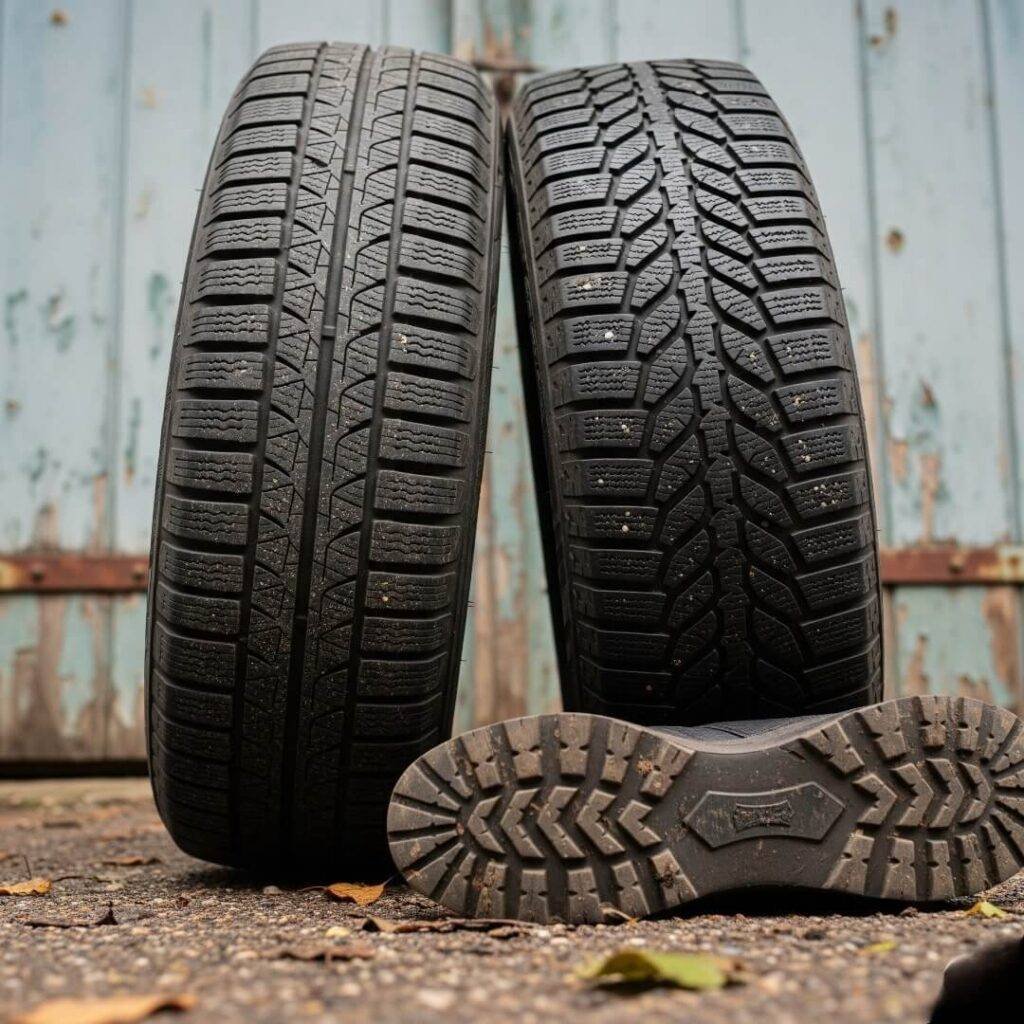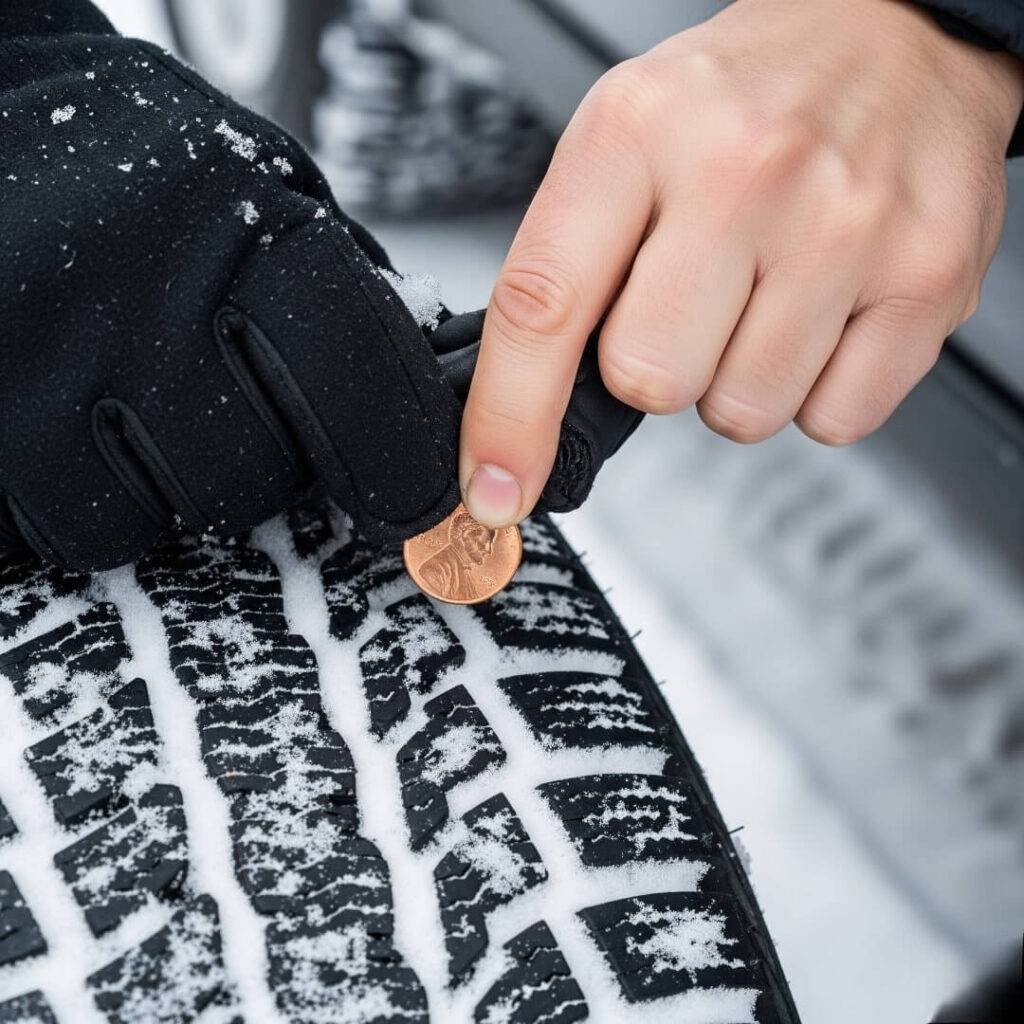So, all-season vs winter tires is something I’ve been stressing about ever since I slid halfway into a ditch on some icy Ohio road last winter, my coffee splashing everywhere and my ego taking a bigger hit. I’m in my garage now, freezing my butt off, the air smelling like old oil and wet cardboard, my car parked outside with tires that look like they’re mocking me. Choosing tires is like picking between a cheap umbrella or a full-on raincoat for a Midwest storm—one’s kinda okay for everything, the other’s great but only when it’s pouring. I’ve screwed up this tire thing so many times, it’s honestly embarrassing, but here’s my messy, real talk on all-season vs winter tires for 2025. I’m no expert, just a dude who’s spun out more than I’d like.
Why All-Season vs Winter Tires Keeps Me Up at Night
Living in the US, where winter can go from “aw, cute snow” to “oh crap, I’m stranded” in like, no time, tires are a big freakin’ deal. I found this out the hard way when my all-season tires—y’know, the ones that say they can handle anything—sent me sliding like a bad ice skater last February. I was jamming to some random Spotify playlist, heater blasting, when my car just noped out on a turn. My heart was pounding, I was yelling something stupid like, “Come on, man!” Consumer Reports says winter tires stop you way better on ice, like 20-25% shorter distances, and after that mess, I’m sold. All-season tires are like that cousin who’s “fine” at everything but kinda sucks when it gets real. Winter tires? They’re the pro you call when the snow hits hard.
- All-season tires: Decent for most weather, don’t need swapping, but they get hard and slippery when it’s freezing.
- Winter tires: Grip snow and ice like nobody’s business, but you gotta swap ‘em out and they wear out quick on dry roads.
My All-Season vs Winter Tires Disasters (Ugh)
Okay, real talk, I’ve made some dumb moves with tires. Last winter, I was too cheap—or maybe just lazy—to get winter tires, thinking my all-seasons could handle Ohio’s wild weather swings. Spoiler: they didn’t. I was driving to grab some wings, snow coming down like it was mad at me, and my car fishtailed so bad I almost ended up in a farmer’s field. My hands were sweaty, my wipers were useless, and I’m pretty sure I mumbled, “Why am I so dumb?” I checked my tread later with a penny—you know, that Lincoln-head trick—and my all-seasons were basically bald in snow. Tire Rack talks about how winter tires have these tiny tread cuts called sipes that grab ice, and man, I wish I’d read that sooner.

Then there’s the time I did get winter tires but totally forgot to swap ‘em out in spring. Picture me driving in May, it’s like 70°F, and my winter tires are whining louder than my dog when I’m late with dinner. They wore down faster than my patience, and I felt like a complete idiot. Like, who leaves snow tires on in summer? This guy, apparently. Winter tires in warm weather are like wearing a parka to a barbecue—stupid and they’ll fall apart.
What I’ve Learned About All-Season vs Winter Tires (Barely)
Here’s my take, based on too many close calls and a bruised ego. All-season tires are cool if you’re somewhere with soft winters—think a dusting of snow, not a full-on blizzard. They’re cheaper, you don’t have to mess with swapping, and they’re okay for rain or dry stuff. But if you’re in a snowy hellscape like Ohio, winter tires are where it’s at. They grip like crazy, but you gotta deal with swapping them, which is a pain and costs extra. Bridgestone has this thing about how winter tires’ rubber stays soft in cold, which saved my butt during a surprise ice storm last month—though I still drove like I was scared of my own shadow.
My not-so-expert tips for 2025:
- Pick all-season if: You get light winters or you’re broke and can drive super slow in snow. They’re like that reliable buddy who’s always there.
- Pick winter tires if: You get real snow or ice, or you just don’t wanna stress about sliding. They’re pricey but make you feel like a snow ninja.
- Don’t be me: Store your off-season tires somewhere dry. I left mine in my gross garage and they got this funky mold smell—gross.

The Money Part of All-Season vs Winter Tires (and My Wallet’s Tears)
Money talk, ‘cause I’ve messed this up big time. All-season tires are cheaper—maybe $80-$200 a pop, depending on your car. Winter tires? More like $150-$250, plus swapping fees (like $50-$100 each time unless you’re some DIY god). I tried to save cash by sticking with all-seasons one winter, and yeah, I “accidentally” kissed a mailbox. My insurance guy was not amused. Goodyear has this cost comparison tool that I found after I blew my budget. If you’re in a snowy state, budget for winter tires like you’d budget for a decent coat—it’s worth it to not crash (or cry).

Wrapping Up My All-Season vs Winter Tires Rant
Look, picking between all-season vs winter tires in 2025 is all about where you live, how you drive, and whether you’re cool with swapping tires like you’re in a pit crew. I’m no tire guru—just a guy who’s skidded into too many snowbanks to not have opinions. My all-seasons let me down when the snow got real, but my winter tires made me feel like I could handle anything (until I forgot to swap ‘em, duh). Check out Tire Rack or hit up a local shop for the real deal, and don’t wait till you’re stuck in a ditch like me. Got your own tire fails? Drop ‘em below—I wanna hear the chaos.
Outbound links :














































